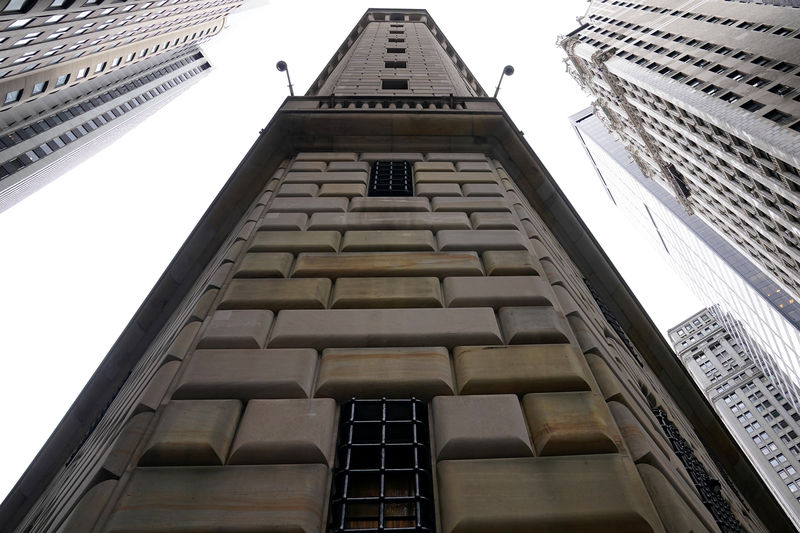By Jonnelle Marte
NEW YORK (Reuters) - New York Federal Reserve President John Williams (NYSE:WMB) said Thursday the central bank is learning as it works to increase liquidity in the banking system and that it will adjust its approach as needed.
One early lesson from the Fed's daily interventions in money markets is that a standing repo facility, which would allow banks to convert Treasury holdings to cash, might not be enough on its own to make sure banks have the liquidity they need, Williams told reporters following an event organized by the Managed Funds Association
There are still a "number of steps needed" to spread reserves out more broadly throughout the banking system after a repo operation, he said.
"I don't think that alone would address the problem," Williams said. "Repo does add reserves but it’s not a perfect substitute for actually having a higher level of reserves permanent in the banking system."
The Fed expected that certain events happening in mid-September, including corporate tax payments and Treasury settlements, would increase demand for reserves, Williams said at the event earlier. However, the size of the payments and its effect on short-term borrowing rates "were outside of recent experience," he said.
The New York Fed calmed money markets and stabilized borrowing rates by injecting billions of dollars of cash into the financial system through daily operations in the market for repurchase agreements, or repos.
The central bank announced last week that it will continue to offer those daily repo operations through January. It also said it would increase the level of reserves in the banking system by purchasing short-term Treasury bills at an initial pace of about $60 billion per month.
Speaking about his outlook for the economy, Williams said the interest rate cuts the Fed approved this year leave monetary policy in a position to appropriately address current risks to economic growth and that future decisions will be set on a "meeting by meeting" basis.
Williams said Fed officials factored in a slowdown in global growth, low inflation and uncertainty around trade policy when they decided to lower borrowing costs in July and September. But he said that while those concerns are still hovering over the economy, policymakers will need to focus on the outlook to justify future rate cuts.
"I don't want to have this narrative that we still have the same conditions out there so does it mean we need to take further and further action," he told reporters. "What we need to do is weigh or consider how those factors are influencing the outlook."

Williams said the economy is in a "pretty good place" and that consumers have been "very resilient." He cautioned that consumer spending is a lagging indicator, but said that so far the factors that affect consumer spending, including asset prices, job growth and wage gains, have been positive.